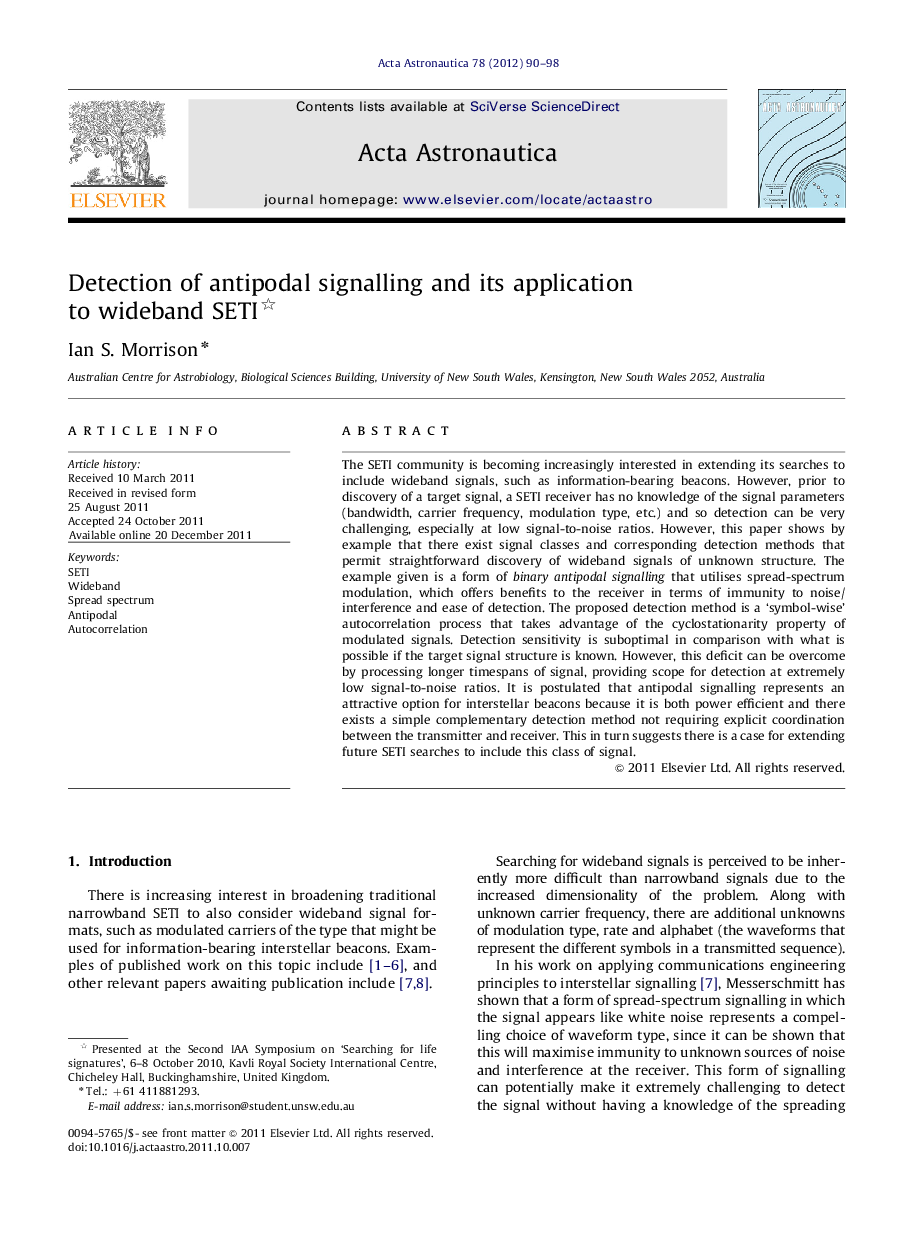| Article ID | Journal | Published Year | Pages | File Type |
|---|---|---|---|---|
| 1715281 | Acta Astronautica | 2012 | 9 Pages |
The SETI community is becoming increasingly interested in extending its searches to include wideband signals, such as information-bearing beacons. However, prior to discovery of a target signal, a SETI receiver has no knowledge of the signal parameters (bandwidth, carrier frequency, modulation type, etc.) and so detection can be very challenging, especially at low signal-to-noise ratios. However, this paper shows by example that there exist signal classes and corresponding detection methods that permit straightforward discovery of wideband signals of unknown structure. The example given is a form of binary antipodal signalling that utilises spread-spectrum modulation, which offers benefits to the receiver in terms of immunity to noise/interference and ease of detection. The proposed detection method is a ‘symbol-wise’ autocorrelation process that takes advantage of the cyclostationarity property of modulated signals. Detection sensitivity is suboptimal in comparison with what is possible if the target signal structure is known. However, this deficit can be overcome by processing longer timespans of signal, providing scope for detection at extremely low signal-to-noise ratios. It is postulated that antipodal signalling represents an attractive option for interstellar beacons because it is both power efficient and there exists a simple complementary detection method not requiring explicit coordination between the transmitter and receiver. This in turn suggests there is a case for extending future SETI searches to include this class of signal.
► We introduce a new algorithm for discovering wideband signals in SETI. ► The algorithm is a modified form of autocorrelation that exploits cyclostationarity. ► Detection does not require prior knowledge of the signal structure or parameters. ► Detection performance is maximised with antipodal spread-spectrum signalling. ► Antipodal spread-spectrum is a compelling signalling choice for METI beacons.
